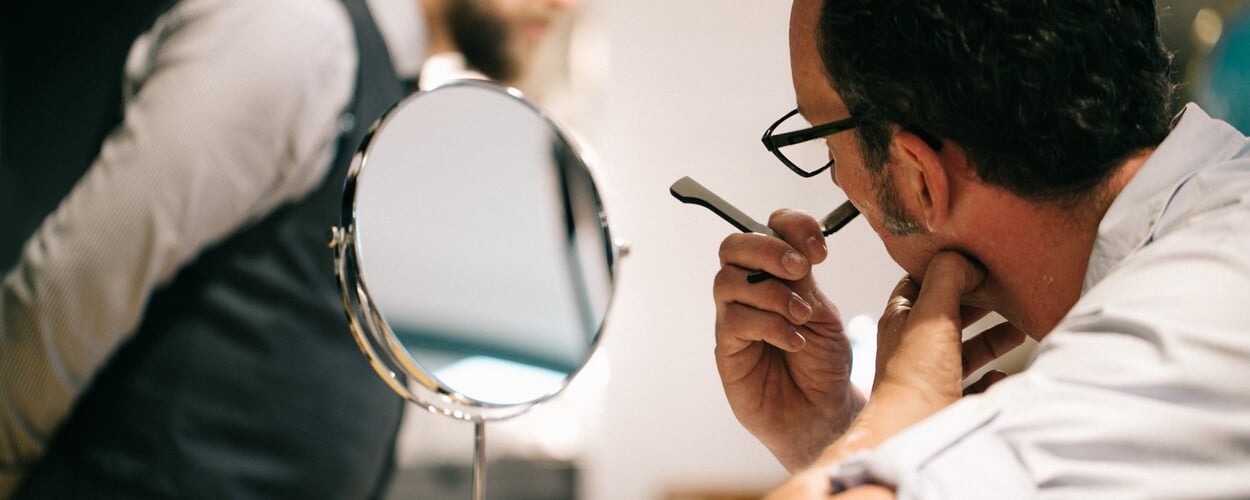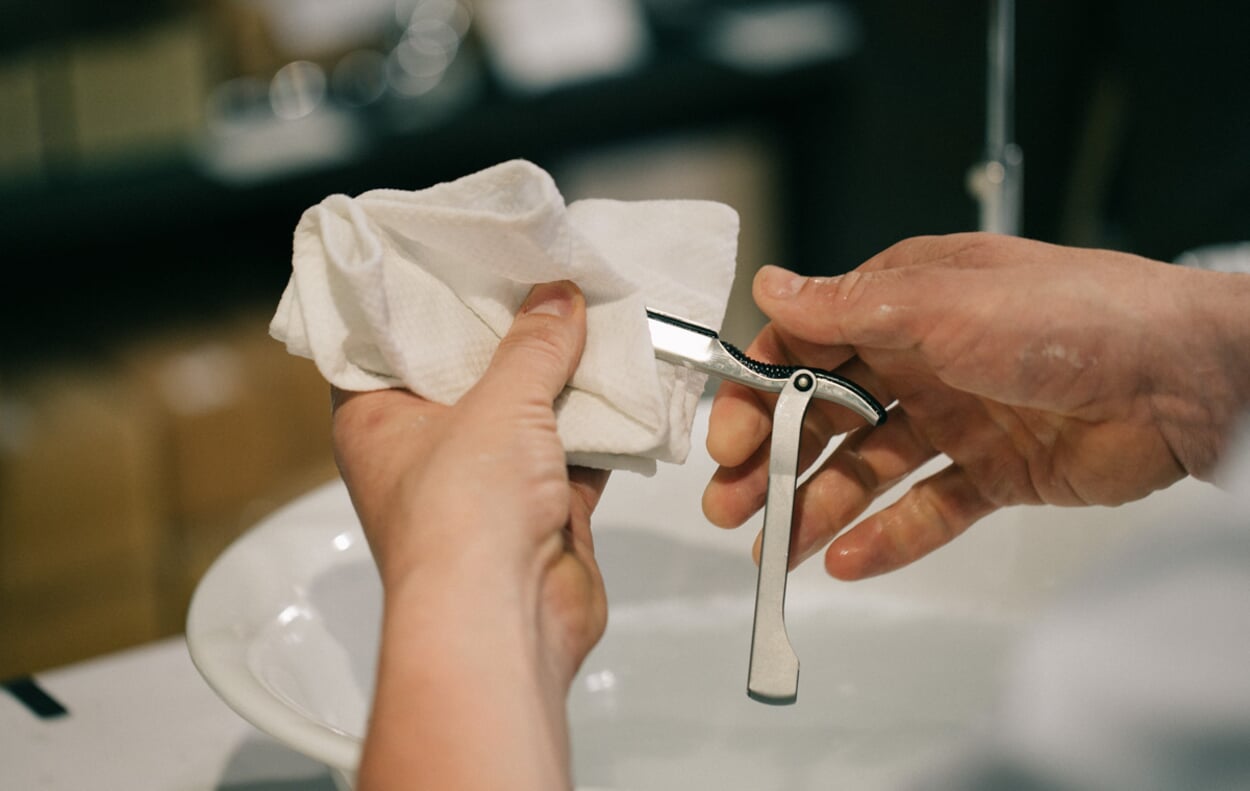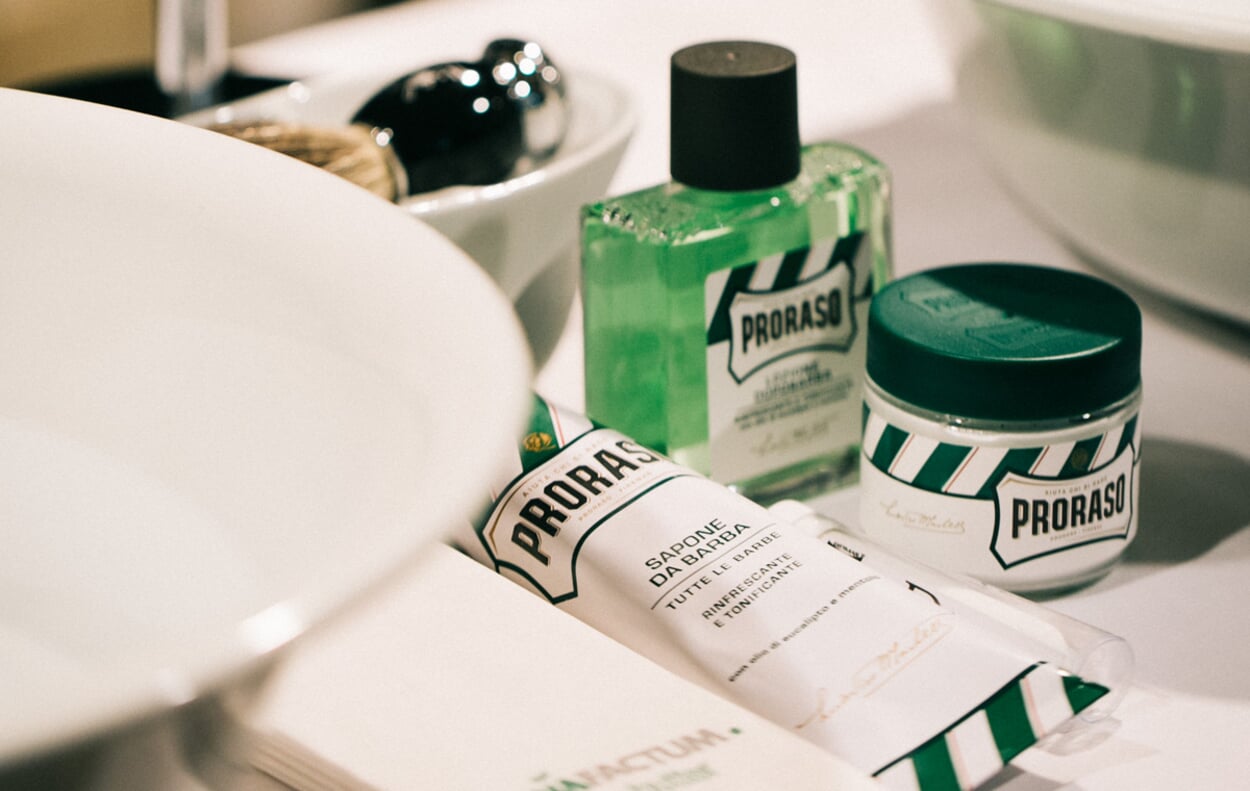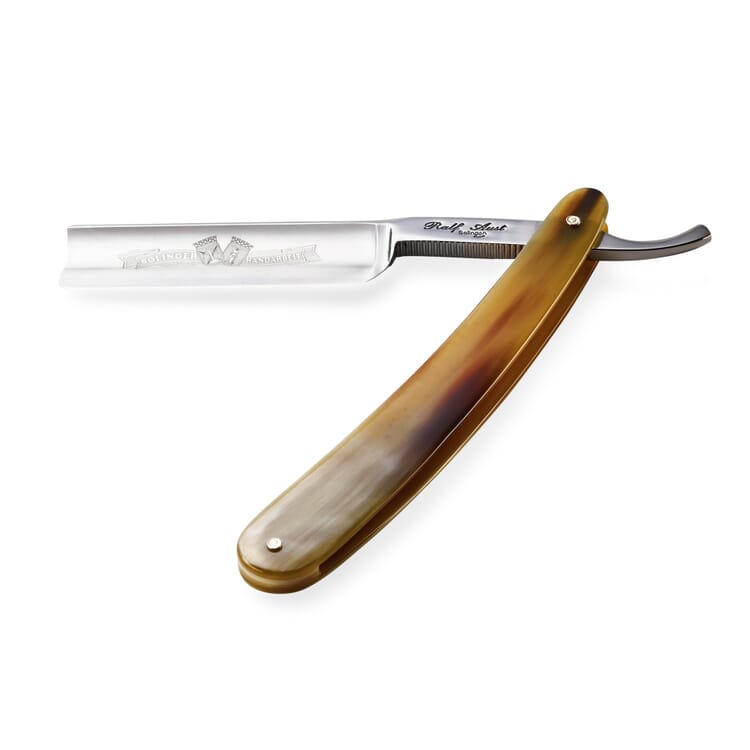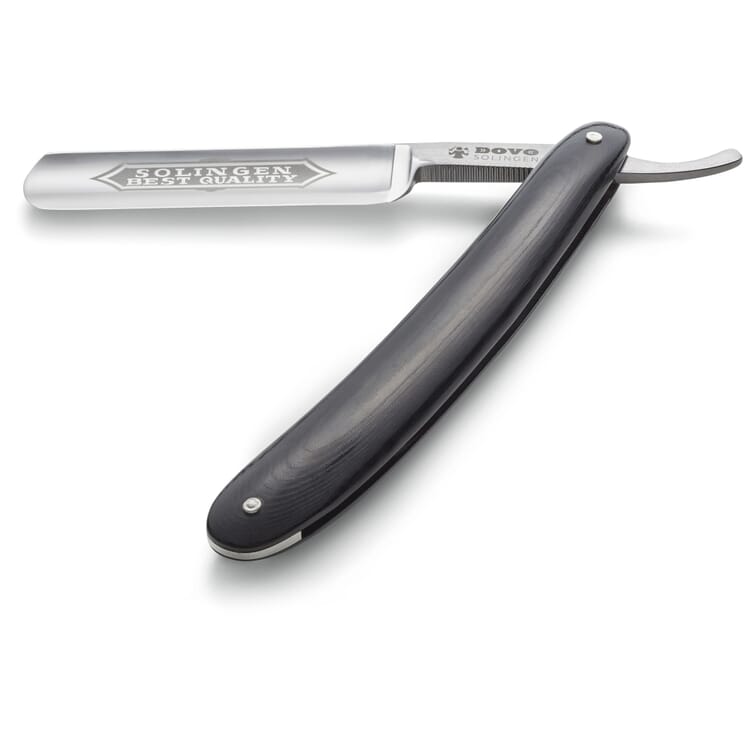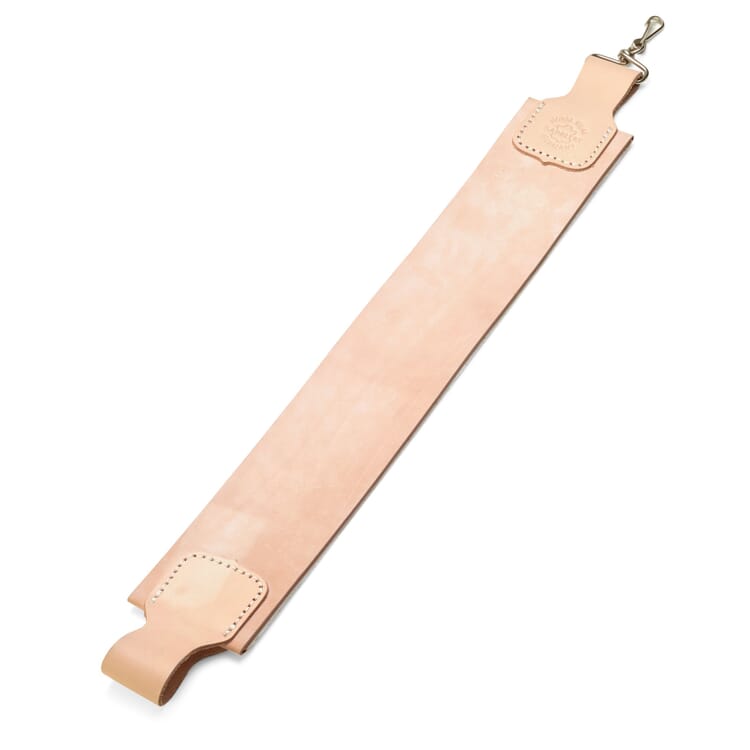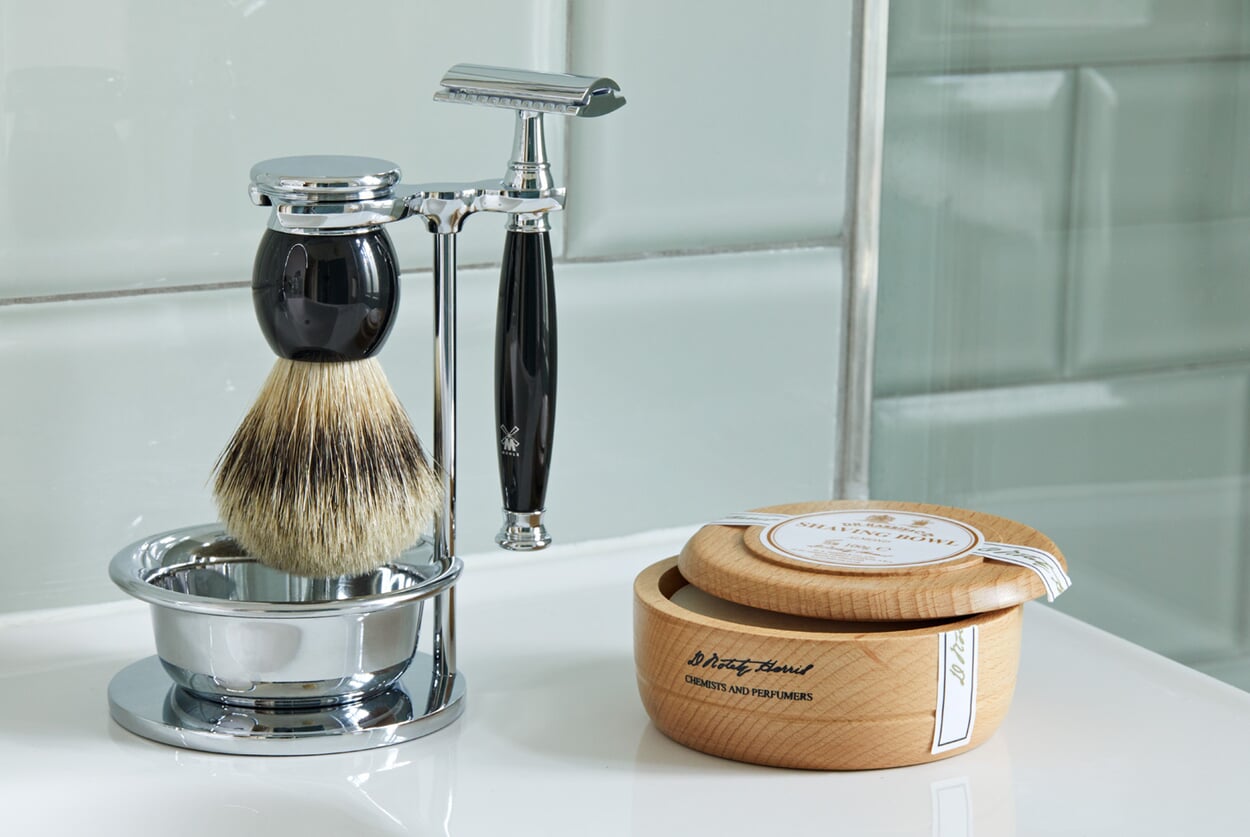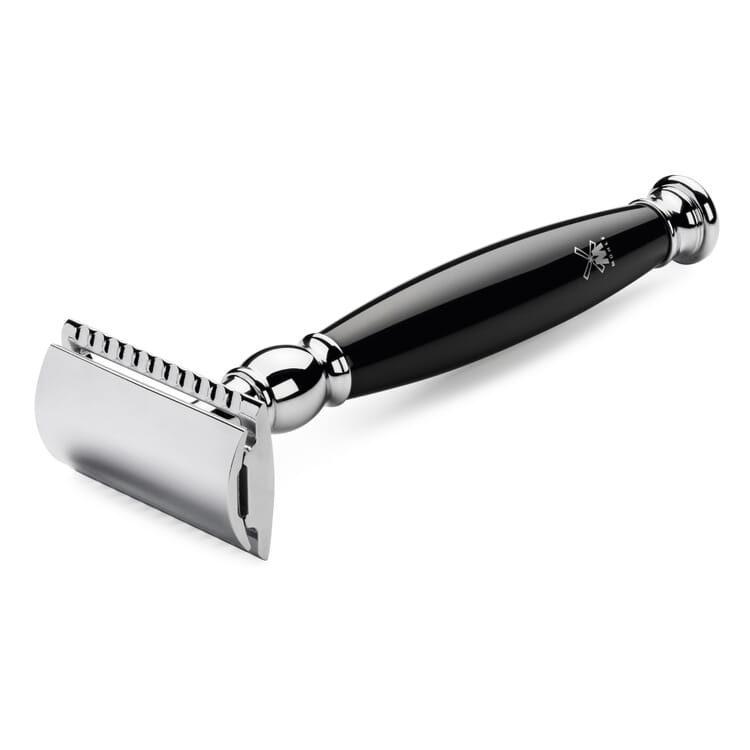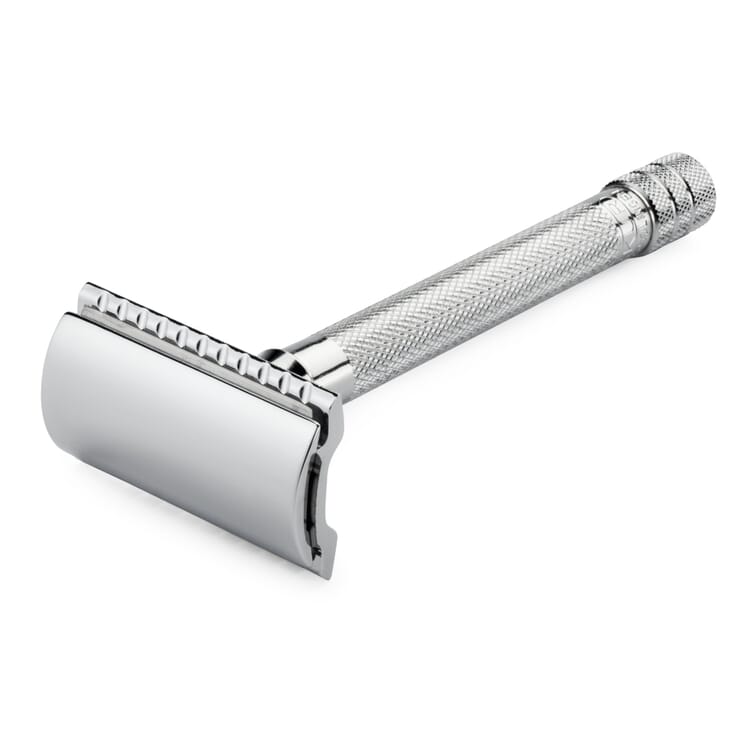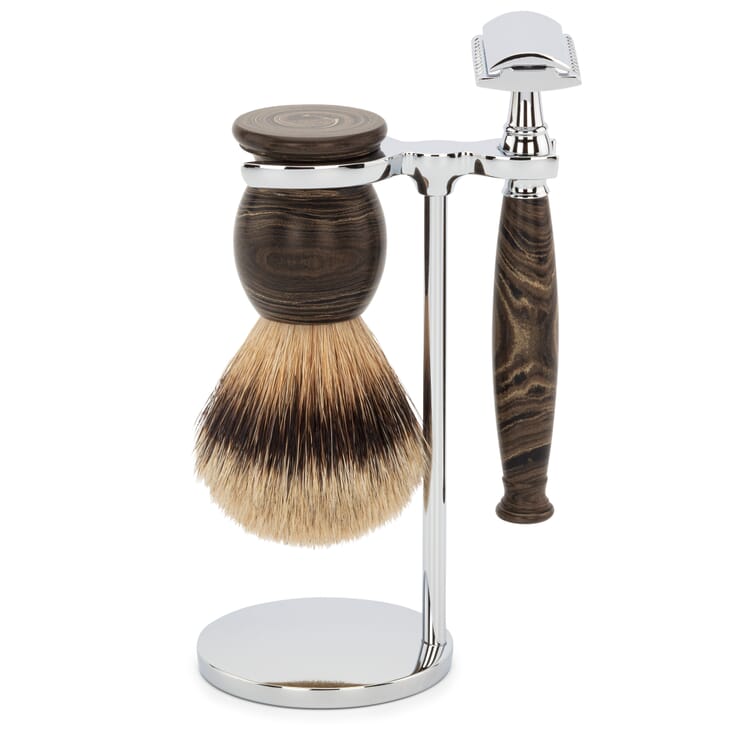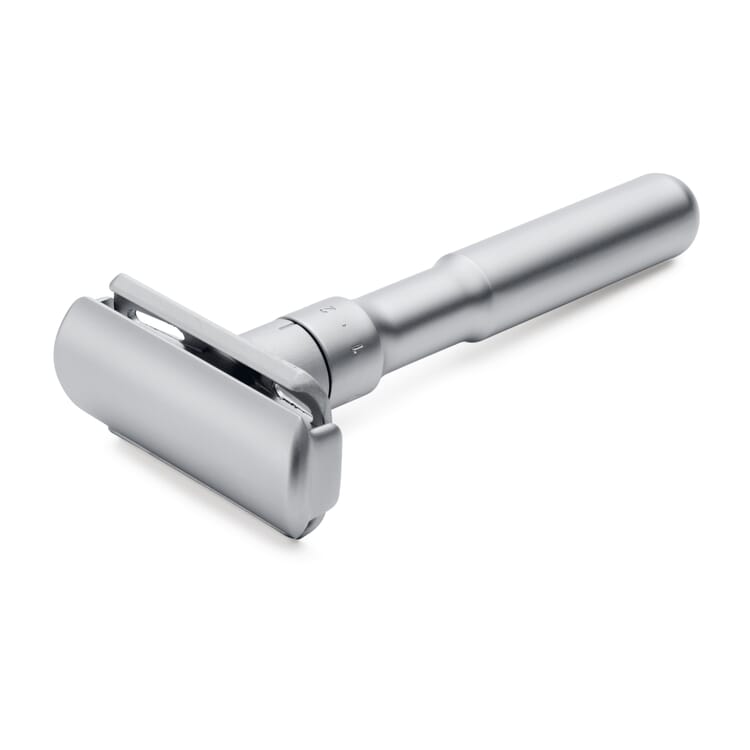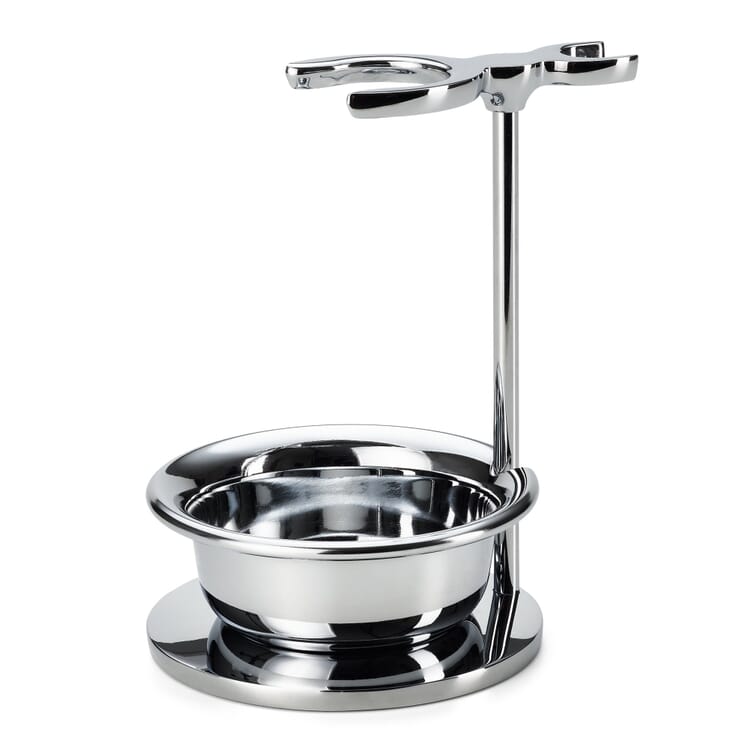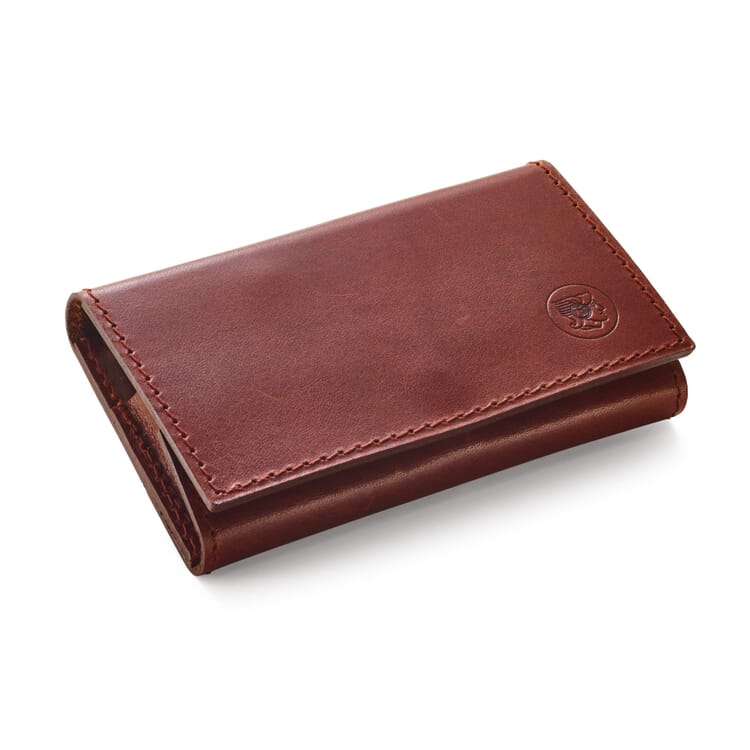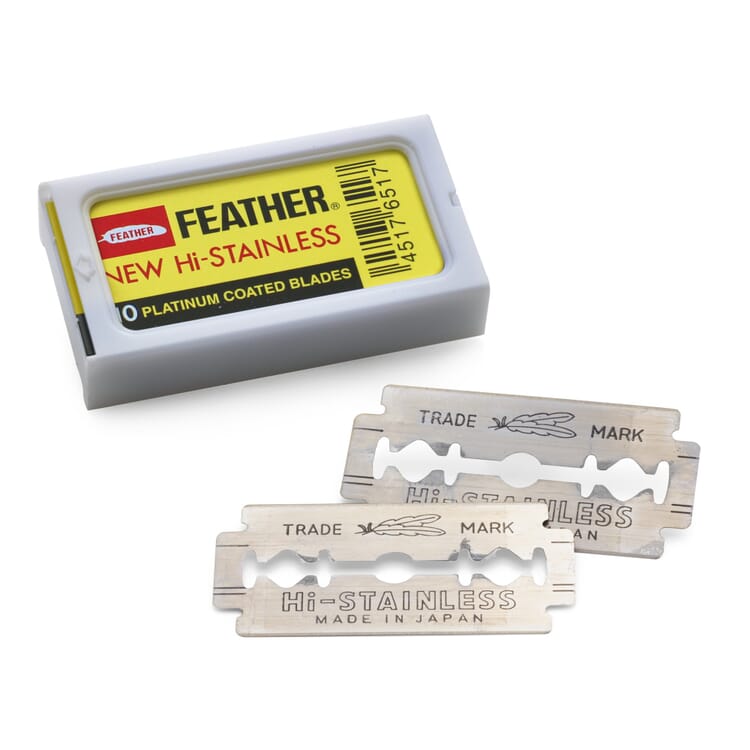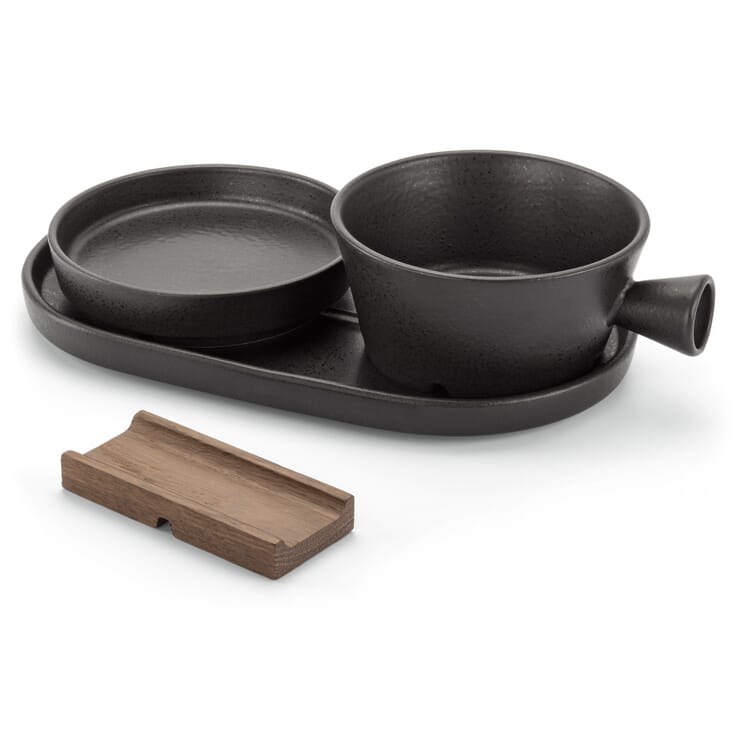Helpful tips
Self is the man. The classic shave with razor and straight razor
To beard or not to beard, that is the crucial question. And so it has been since man began to get rid of his beard hair with rudimentary means such as flint, shells or shark teeth, or more precisely: to scrape it off. Sometimes the beard was in demand, sometimes frowned upon, and beard or beardlessness was always a sign of social affiliation - even today. It needs thereby no pronounced observation gift, in order to notice in the last years exponentially risen growth of the beards. Who concludes however from the fact that the care of selbiger would have decreased thereby, is on the wrong track. Just classical shaving methods such as those with razor plane or even with the razor are due to their thoroughness (not only) in the area of the contours again on the advance. Every man, from clean-shaven to full-bearded, benefits with a little practice from wielding such a sharp blade.
The knife shave. Less is more
Wet shaving with the razor is certainly the most original and reduced of all shaving methods. This alone makes it neither better nor worse, it's just different, definitely more challenging, but also the most thorough due to its immediacy. Another reason that speaks for the razor: Although the purchase is not cheap, but since no waste arises and a razor can accompany the owner for many years, if not a lifetime, it is the most sustainable and cheapest option in the long run.
At this point, a few initial assistance for the knife shave:
- To bring the razor in the correct position, unfold it and then move the blade by just under 270 ° away from the shell. Between the wide blade and the joint is the somewhat narrower tang, whose upper side merges into the back of the knife. The end of the blade shaft, on the other hand, which protrudes from the shell on the other side of the joint, is called the tang
- With how many fingers you hold the razor is a matter of taste. The basic posture, however, provides that the thumb grips the bottom and the index finger the top of the Erls, while the middle finger rests on the top of the Angel. This variant offers the greatest flexibility. Those who prefer a firmer grip on their razor, on the other hand, can have one or two additional fingers move onto the tang, starting from the index finger. The tang is then held accordingly by ring finger and / or little finger.
- Regardless of the shaving method is the optimal angle between blade and skin 30 °. A flatter angle tends to pluck rather than cut the hair, a steeper angle increases the risk of cutting
- Before each shaving step, it is essential to stretch the skin with the free hand. This reduces the risk of injury on the one hand, and on the other hand, the beard hairs emerge further from the hair channel, resulting in a smoother result -Be sure to scrape the skin from the wrist in smooth, long strokes and with little pressure. The knife is always moved so that the blade is at a 90° angle to the cutting direction.
- The first moves should be made with the stroke (that is, in the direction of growth), a second pass across the stroke, and the final finishing touch is made by shaving against the stroke. If you have sensitive skin, you can also omit the last step or skip the second step
- After each stroke, rinse the foam residue from the blade or wipe the razor on a fresh sponge or towel. So you have the skin area to be shaved and the beard contours at all times well in view.
Regardless of the shaving method, the optimal angle between the blade and the skin is 30°.
After each stroke, rinse the foam residue from the blade or wipe the razor on a fresh sponge or towel
Nourishing and refreshing lotions and waters round off the shave
So that everything runs smoothly. The care of the razor
So that you can enjoy your razor for a long time, it is important to note a few points in terms of care - because knives made of carbon steel are extremely hard, can therefore be particularly sharpened and also remain sharp for a long time, but are not rust-resistant. Therefore, the following applies:
- After each shave, the razor must be cleaned carefully. Rinse it thoroughly with clean water so that no hair and foam residues are left, and then carefully pat the blade dry. Under no circumstances should you rub along the edge - this can damage the delicate burr of the blade, which is damaged by shaving.
- Always store your razor well dried in the air. If there is very high humidity in your bathroom, it is preferable to store the knife in another room.
- If you do not use your razor for more than a week, rub it with a protective oil to keep water away from the blade. Before this treatment, however, the knife must be completely dry - even small amounts of moisture, if trapped under the oil, will cause staining and rusting.
In order to maintain the sharpness of the knife as long as possible, the blade should also be abgeledert before each shave, because the fine burr of the cutting edge is easily bent with each use by the sometimes quite hard beard stubble:
- It is important to let the razor before each Abledern at least 24 hours rest, so that the resulting unevenness can first straighten up a little independently. Otherwise, there is a risk of permanent damage to the blade. If you shave more often than once a day, it is therefore advisable to purchase a second razor, to ensure sufficient rest periods each time.
- When deriving with a hanging belt, this should always be well tensioned, otherwise the blade can round, which reduces the uniformity of its cut.
- The correct posture of the knife when deriving is quickly learned. There are two things to keep in mind:
- the angle between the knife and the hanging belt should always be extremely flat and
- the change of direction always takes place over the back of the knife. Place the knife on the belt so that the blade and back are in contact with the leather. Now pull it up the entire belt with slight pressure in the direction of the back of the knife, turn it over the back to the other side and pull it down again. Ten to 15 repetitions are enough to give the knife back its sharpness
- If at some point the razor rather plucks instead of cuts despite Abledern, it is time to have the knife professionally sharpened.
Our razors
The razor plane. On the safe side
For many, the word razor plane may first sound bulky, one associates with a look in the wood workshop but a rather rough and coarse treatment. In fact, however, a plane is an extremely effective tool and the "chips" that fall in the case of the razor plane in the form of whiskers, in the end also exactly this fate is intended. Worries about the sensitive facial skin, on the other hand, are superfluous when used properly, because the design of the device - whether razor plane or wooden plane - is made to remove only what should be removed. Therefore, it is not for nothing that the razor is also called safety razor. For all those who shy away from the use of the razor (for now), a razor plane is therefore perhaps the better choice.
In principle, a razor plane is nothing more than the archetype of the mechanical razor. Unlike modern system razors, however, it works with classic double-sided razor blades, which are clamped in the head of the razor plane. Since these razor blades must be changed regularly, the razor plane, unlike the razor, waste products, which makes it permanently somewhat more costly. Compared with system blades, however, both the cost is lower and the wear products are more environmentally friendly, because classic razor blades are made entirely of metal and do not require plastics. Good razor blades are also significantly sharper than system blades and can in principle even be resharpened.
Keenly observed. The differences of razor planes with open and closed comb
Whether a good razor shaves more thoroughly than a good system razor or whether there is no great difference between these two variants, the opinions differ. If you look at the two main areas of application separately, the question is easier to answer. The first competence concerns the cleanness of the contours with a partial shave: By the fact that the blade beginning is more clearly recognizable with a razor plane than with a system razor, it is clearly better suited to work precisely. How smooth the skin feels after shaving, on the other hand, depends largely on which type of razor is used: one with a closed or one with an open comb. As another variant, razors are offered with the blade at an angle to the handle, which also has an impact on the thoroughness of the result. The following advantages and disadvantages have the different models:
- For inexperienced in the use of a razor and men with more sensitive skin, a razor with closed comb is recommended. In this case, the edge that comes into contact with the skin is smooth, which makes the skin less irritated. In addition, the risk of cutting yourself in case of mishandling is less than with the open comb due to a comparatively narrower blade gap. This variant is most comparable to a system razor due to its directness - The open comb, on the other hand, has clearly visible teeth - so the edge that comes into contact with the skin is serrated. The distance between the blade and the comb here provides a greater margin, which is helpful to better capture dense, longer and wirier beard hair. Those who do not shave every day are better off with this model. However: contact with the skin is also more direct due to the open toothing, which leads to a potentially higher risk of injury. With an open-toothed razor, it is even more important to always maintain the correct angle, which is 30°, just like the razor shave. In return, it rewards with an even closer shave
- Finally, with the bevel cut razor remains the most aggressive of the three variants, whose result comes closest to the knife shave, but whose use also requires the greatest skill. In contrast to a classically shaped, open or closed comb, the razor blade sits here at a slight angle in the head of the razor plane, and in the case of a torsion plane, it is additionally under tension due to a slight twist. The result: with an equivalent to the other two models executed train you capture the hair here at a better angle, it is not only capped, but really cut by the oblique movement, which improves the result once again. Especially particularly strong and also frizzy beard hair should be removed more effectively with it.
- Probably you can't avoid forming your own judgment, even possibly feeling your way step by step from one variant to another, in order to slowly but surely get a feeling for this type of shaving and to find out with which one you get the best results. Regardless of the model, the following applies: after each stroke you should rinse out foam and hair residues, otherwise they will clog the razor head. The shave should take place just like the razor without pressure, even if you feel that the sharpness of the blade decreases. Instead, you should, at the latest when it starts to pull, change the blade - which is on average every eight to ten shaves.
Our razors
A nice touch. The choice of razor or straight razor
No matter which shaving method you choose, the razor shave or the razor shave - both are not only extremely thorough, they also have an almost meditative character and high aesthetic appeal. Not without reason, the classic wet shave plays an important role in many films, both old and new. Most recently, the appearance of a straight razor in the James Bond film "Skyfall" is said to have significantly boosted sales in this area. Not that we wanted to cite the original beauty of the razor shave as a major argument in favor of this method, but it is undeniably an attractive side effect. And for all those who, despite all the arguments listed in advance, prefer a system razor - after all, all men are different and so are their shaving requirements - we offer a stainless steel model that also makes this variant of wet shaving a stylish pleasure. At least provided that a good shaving brush and a soothing shaving soap are at his side. Because only together these [shaving utensils]/shaving-supplies-c198813/) shine in the art of going properly around your beard.

